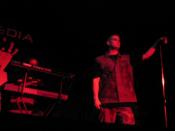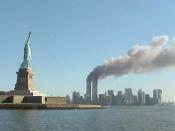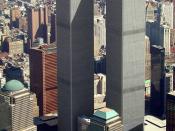On September 11th, 2001, millions around the world crowded around televisions across the globe, watching the horrific scenes of terrorism that had struck New York City, Washington, D.C and Pennsylvania on that ill-fated and now infamous morning. Our sense of security and impenetrable protection crashed 110 stories to the shaken streets of New York City. We watched with shock and horror, disbelief and grief as the images were repeatedly flashed before our eyes, with the all the drama of the plane crashing through the World Trade Center and bursting into an indescribable ball of fire and of the surreal scenes of demolished piles of what used to be the Twin Towers of New York City. We witnessed desperate pleas for help from family members of missing victims. We were shown images of the wounded victims and of the unimaginable destruction in the streets of New York. Our expeditious system of mass media provided us with an immediate window to this dramatic and unprecedented tragedy.
We were not alone as we stood looking through this window to the trauma and terrorism enveloping us. As we looked on with fear and horror, so did children. As we watched the 24-hour coverage of the events unfolding, so did children. Every major station broadcast continuous coverage of the "attack on America" for days following the tragedy. While networks provided live coverage, personal interviews and professional analysis, cable stations flashed messages of condolence and sympathy across the bottom of the screen during regular programming, as a constant reminder and acknowledgement of tragedy that had shaken us to our knees. If we as adults were so affected by the trauma of the events, then what can be said for the children who witnessed these same images of horror and terrorism? How, with such...


